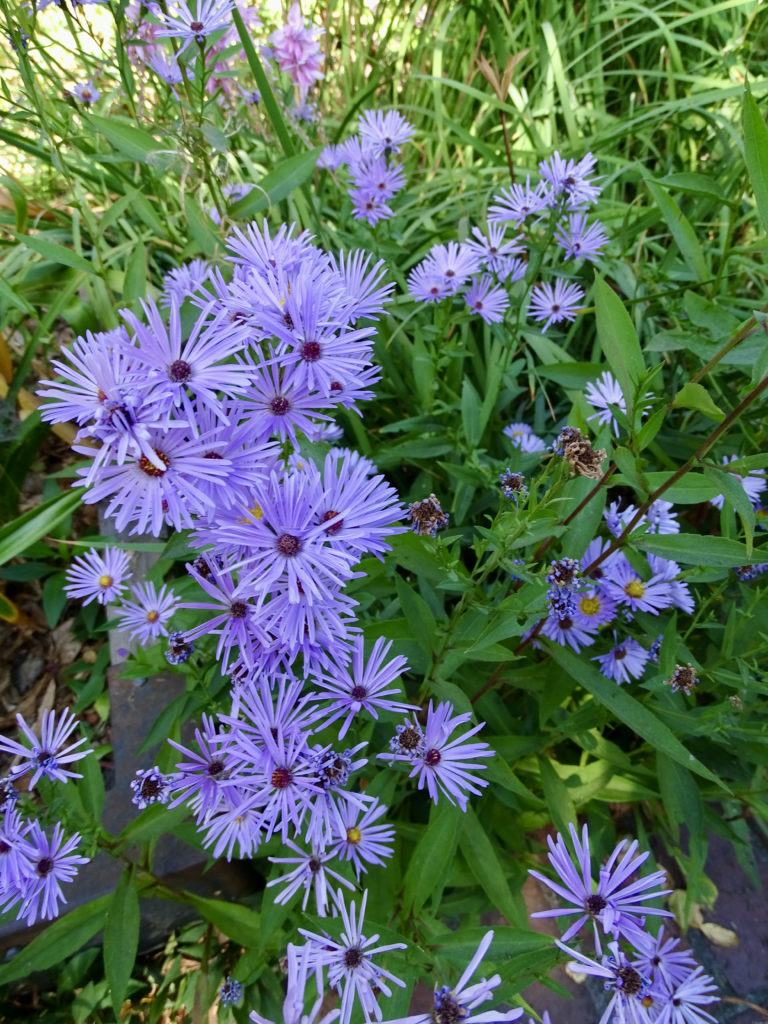Alabama Gardener

Like bird-watchers, “flower-watchers” keep eyes peeled for what might suddenly appear while driving down the road.
“Did you see that? I think it was daylilies.” Or black-eyed Susans. Or verbena. It could be one of many possibilities. A genuine plant nerd will likely make a U-turn to get a better look at the “65-mph plants.” A mass can be showy enough to be appreciated from a fast-moving vehicle but is sometimes impossible to identify without that second look.
These big shows are often along sunny edges of a property. Sometimes they mark the location of an old homestead where the only thing left is a spread of color that grows bigger with each passing year. Many times these are perennial plants, able to come back from an occasional untimely mowing or spray from roadside maintenance. Their roots form a strong underground colony, providing resilience in tough times.
Only gardens with the luxury of space have room to let good plants like this spread with abandon. If the space is available, why not create a pretty patch of color of your own? It’s a small way to make Alabama more beautiful. Here are a few prolific plants easy to start from pass-along pieces or purchased plants.
Thrift (Phlox subulata) is a creeping phlox. It marks the change from winter to spring as it blooms in a carpet of pink, magenta or blue. It pairs beautifully with daffodils.
Rose verbena (Glandularia canadensis) forms a low, creeping perennial ground cover that starts blooming in spring and continues into summer. The popular cultivar Homestead Purple makes a great flowering blanket that does well in poor, sandy soil and comes back well when trimmed (or mowed high) after flowering.
Daylilies, the old-fashioned orange tawny kind, are the classic summer roadside flower, often marking old homesteads. Tawny daylilies are available, but you can also choose from newer daylilies prized for their ability to multiply and bloom more than once. These include Stella d’Oro, Happy Returns and Pardon Me.
Hardy gladiolus (Gladiolus byzantinus), another treasure from the past, creates an unmistakable show of hot pink in late spring. Cold-hardy perennial gladiolus differs from fancy hybrid gladiolus by multiplying and spreading to form larger clumps. They are also called byzantine gladiolus.
Black-eyed Susans (Rudbeckia species) include many different annual, biennial and perennial species native to the Southeast that bloom in summer or fall. Goldsturm and American Gold Rush, which spread via underground runners, are most persistent. They bloom mid-to-late summer.
Asters make a big show and multiply by spreading underground. Most bloom in summer and fall. The many cultivars of fall-blooming New England aster (Symphotrichum novae-angliae) are easiest to find and are adaptable; they range from 3 to 6 feet tall and vary from purple to pink.
Swamp sunflower (Helianthus angustifolius) is common along the roadside, especially in low areas. A tall, clumping perennial wildflower, it spreads by underground runners and can quickly make a large clump, especially in damp soil. Save this one for a place where a tall plant works well, as it easily reaches 6 feet or more. It blooms in the fall.
All of these “65-mph plants” will thrive in open areas with full sun; all except swamp sunflower need good drainage. You can create an evolving show from spring through fall. Now is a good time to start planting!
By Lois Chaplin
